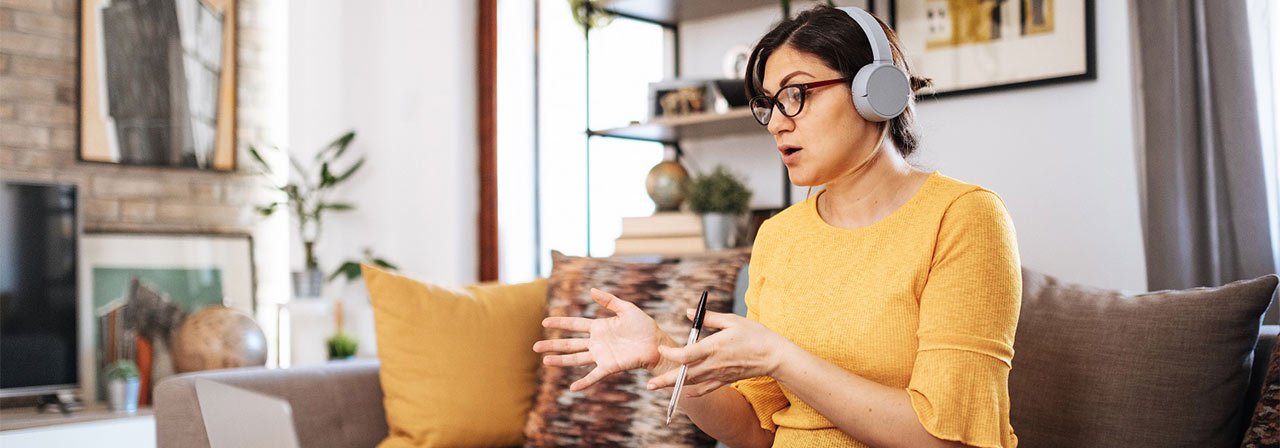How remote working is bedding in
It’s getting on for a year since remote work became a mainstream part of working life
When millions of people settled down to work from makeshift home offices as the pandemic first hit, few thought it would mark a long-lasting shift in traditional ways of working.
Fast forward to today and many companies have voiced their support for a hybrid model of work where people spend part of the week in the office and part working from home or coworking spaces.
It’s bringing a new set of challenges for companies who want to keep employees engaged and productive wherever they’re working from - while also looking out for their health and wellbeing.
“How companies engage with their workforce is absolutely critical to their new business model,” Sue Asprey-Price, JLL’s UK Head of Work Dynamics, tells JLL’s Perspective for Enterprises event. “It’s about how the workforce is treated which impacts how they view their work environment as well as remote working.”
Keeping communication channels open
While some employees have enjoyed more of a work-life balance while working remotely, others have found the experience to be isolating and stressful. In a July survey, global employment platform Monster found over two thirds of remote workers said they suffered from burnout symptoms, up from 20 percent from a similar survey two months earlier.
Technology has been a double-edged sword, enabling many office workers to work remotely but also fuelling an always-on culture with employees around the world reporting working longer hours than before the pandemic.
Many companies have been investing in digital collaboration tool platforms such as Microsoft Teams, Skype for Business or Zoom to help people stay connected through video and instant messaging.
Research from Ribbon Communications found the number of large companies adopting Teams in 2020 was up 36 percent on the previous year. What’s more, 38 percent of smaller businesses and 66 percent of larger companies say they’re looking to invest more in their communication and collaboration tools in the next two years.
“Technology has been very important for corporate real estate,” Guzman De Blache Yarza, Head of Workplace Strategy for EMEA at JLL also tells the Perspective for Enterprises event. “With remote working here to stay, it’s even more important and so companies will need to prioritise investment in infrastructure that’s proven to be effective during the pandemic. However, they also need to be sure it’s still effective for whatever comes next.”
Taking corporate culture online
A strong and inclusive workplace culture is key to keeping employees motivated and feeling part of a community. With hybrid working now the future model of choice, corporate culture has also gone digital.
During the pandemic, using digital communication tools to socialise with colleagues has been a lifeline for many people missing face-to-face coffee catchups and after-work drinks. Some companies are lending a hand, running initiatives such as weekly virtual lunches where companies such as Wealthsimple pay for food to be delivered to employees’ homes, regular virtual team quizzes or online yoga classes open to anyone.
HR teams are also turning to digital tools to help support employee health and wellbeing. Lettings agency Fisher German, for example, has launched Wellness Wednesdays including webinars and interactive workshops around mental health and nutrition.
“In the workplace it’s easier to gauge peoples’ level of engagement and to know when they need help,” says Anne-Sophie Curet, Head of Human Resources at JLL for EMEA. “Remote working requires a slightly different approach. Training and resources are a must-have to enable remote workers. There also needs to be open ongoing conversations between managers and their teams to maintain strong relationships.”
Yet some companies, struggling with the shift from office presenteeism to trusting their employees to work independently, are using technology in more intrusive ways. Sales of surveillance software such as ActivTrak, Time Doctor, Teramind and Hubstaff have increased substantially during lockdown to monitor keystrokes and log-in times and view screenshots to ensure employees aren’t slacking off.
“Trust and engagement are crucial parts of remote working,” says Curet. “Technology needs to empower people to work productively. People will adapt how they work throughout their career, balancing their personal and professional goals. Companies who understand that will be the ones that attract and retain the talent they need for the new world of work.”
Kitting out the home office
Creating good working conditions equally involves the right furniture and equipment to allow people to be comfortable and productive when working remotely.
JLL research reveals that 75 percent of more than 2,000 employees surveyed now expect their company to support them working remotely and one in three are asking for a dedicated allowance.
Indeed, more companies are now following the lead of Google, Twitter and Shopify and giving employees a contribution of up to $1,000 to kit out their home office.
Even for those employees paying out of their own pocket, sales of ergonomic chairs and desks for use at home have soared since the start of the pandemic. Renting items is also a growing area with the likes of UK retailer John Lewis partnering Fat Llama to join a space where brands like Ikea are already active.
“Creating the right environment for people to be their best, whether that’s at home or in an office pays off in dividends for companies,” says Asprey-Price. “It’s also an important part of supporting that health and wellbeing element which is a growing focus for companies. Making people feel that they’re safe and able to perform is absolutely critical so that has to be on every CEO’s agenda right now.”
